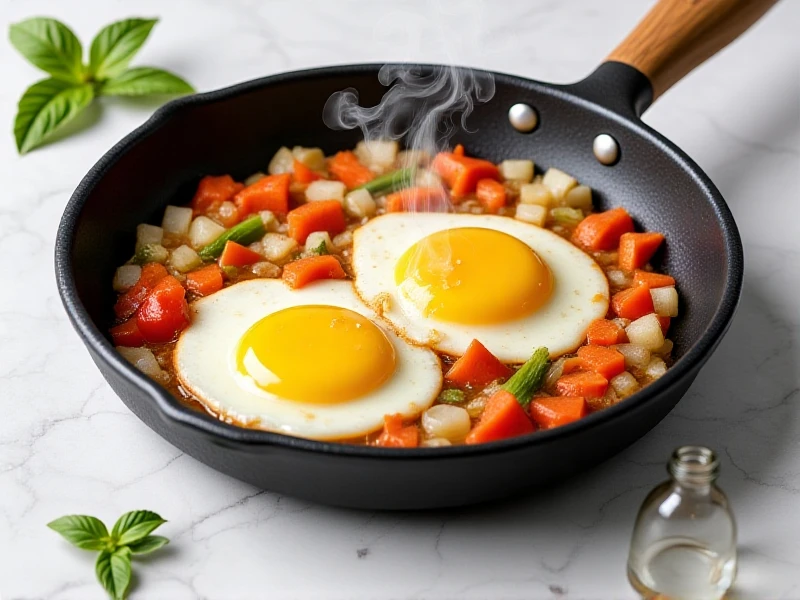
Why Does Food Stick? Unlock the Secrets of Non-Stick Frying Pans
<Why Does Food Stick? Unlock the Secrets of Non-Stick Frying Pans>
That dreaded moment when your fried egg transforms into a torn, sticky mess, stubbornly welded to the surface. Sound familiar? Food sticking isn't just frustrating; it ruins meals and makes cleanup a chore. The secret weapon lies in mastering your frying pan – specifically, understanding how the right non-stick surface revolutionizes cooking.
At its heart, non-stick performance depends heavily on the pan's construction and coating. Modern frying pans often use hard-anodized aluminum cores for quick, even heat distribution, crucial for preventing hotspots that cause sticking. The magic truly happens with the surface coating:
- Traditional Non-Stick (PTFE): Still popular, these feature a slick polish that minimizes contact between food and metal. While requiring care (avoid high heat beyond 200°C/400°F and metal utensils), they excel for delicate items like eggs and fish.
- Ceramic Non-Stick: Gaining traction for being PFAS-free and heat-tolerant, ceramic coatings offer excellent release. Made from inorganic materials, they’re generally easier on the environment but can be less durable against abrasion over time.
- Advanced Hybrid Coatings: Many premium frying pans now combine technologies – diamond-infused particles, titanium reinforcement, or multiple layers – aiming for extreme scratch resistance and enhanced longevity while maintaining superb release.
Choosing Your Champion Frying Pan:
- Material Matters: Hard-anodized aluminum offers superb heat conduction. Stainless-steel options are durable but often require precise temperature control and adequate oil to prevent sticking unless they feature a bonded non-stick layer.
- Weight & Balance: A heavier base feels substantial and aids even heating. Check handle comfort and balance, especially when full.
- Heat Tolerance: Always check manufacturer guidelines. Overheating damages traditional coatings. Ceramic and hybrid options usually withstand higher temperatures.
- Maintenance is Key: Extend your frying pan’s life! Use wood, silicone, or plastic utensils. Hand wash gently with mild soap and soft sponges. Avoid harsh abrasives and stacking without protection.
Beyond Non-Stick:
Remember, even the best frying pan benefits from a little fat. Using oils or butter creates a slick barrier, enhances flavor, and promotes golden-brown searing. Always preheat your pan gently – too little heat promotes sticking, excessive heat wrecks coatings. Cast iron and carbon steel pans offer legendary non-stick eventually, but require dedicated seasoning and care.
Investing in a quality frying pan tailored to your cooking style isn't just about convenience; it transforms everyday meals. Understanding the technologies and features empowers you to choose wisely, saying goodbye to stuck-on disasters and hello to effortless cooking and spotless cleanup. Find your perfect non-stick partner and unlock delicious potential.